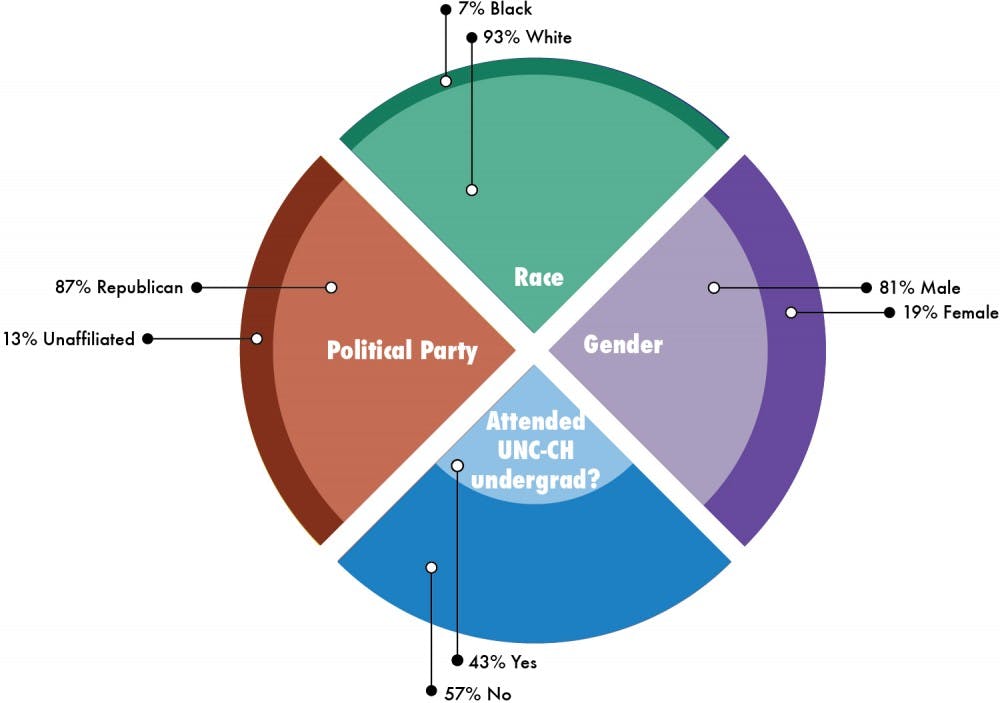Given that the UNC-system Board of Governors is the policy-making body for a diverse system of 17 campuses and 220,000 students, many members of the higher education community expect the board’s makeup to reflect that diversity. But students and faculty have often questioned that diversity during the past year. The board, made up of 32 voting members, is elected by the state legislature. Since 2010, the state has been under Republican control — and the current board largely reflects that political background, with 28 registered Republicans and no Democrats serving. More than 90 percent of current board members are white — a statistic that has faced some backlash in a state university system where six campuses are historically minority institutions. Still, when lawmakers named new nominees who could serve on the board starting this summer, more than half a dozen were black.
This academic year, members of the UNC BOG Democracy Coalition have said the Board of Governors is out of touch with its constituents after the board made several unpopular decisions. In August, the Board of Governors approved a measure that limits the percentage of tuition any UNC school can use toward need-based aid to 15 percent of tuition money. UNC-Chapel Hill uses the largest percentage of tuition for need-based aid out of any UNC-system school. N.C. State University and four of the system’s historically black colleges or universities also meet or exceed the cap on need-based aid. In February, the board unanimously voted to close UNC’s Center on Poverty, Work and Opportunity; N.C. Central University’s Institute for Civic Engagement and Social Change; and East Carolina University’s Center for Biodiversity — a move many said was politically motivated.




